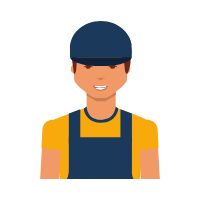Most olive farmers in Australia do know the importance of proper maintenance of their harvesting equipment. Besides, faulty harvesting equipment affects the quality of farm yields as well as overall productivity. Frequent breakdowns may lead to costly repairs or replacement of parts. Furthermore, safety concerns usually arise if these harvesters are not in good working condition.
If you wish to extend the lifespan and improve the ROI of your olive harvester belts but are not sure how to, here are four maintenance tips to consider:
Learn More About Different Harvesting Machines
Different types of harvesting equipment require different handling and operation. Thus, it's a wise idea to learn more about how to operate various types of harvesting equipment. This way, you'll acquire insights into how different machines work and how to run your olive harvester. As soon as you purchase your new harvester, quickly indulge in training while staying up-to-date with new trends in the industry.
Remember, if your skills are below average, it may affect how your equipment functions. Ideally, it's always prudent to revisit the operator's manuals time and again to remain on the safer side. Also, ensure that you are using the most current operator's manual to achieve the required results when working with the olive harvester belts.
Always Keep Your Olive Harvester Clean
Since you are dealing with olives that are edible fruits, the highest levels of cleanliness must be observed all the time. Thus, you should keep a keen eye on the equipment seals to determine whether they are in good working condition as well as replace your filters regularly.
Besides, consistently clean the breathers to prevent the formation of a vacuum that sucks in contaminants. These contaminants can negatively affect the mechanical parts of your olive harvester too. After use, your olive harvester belts should be cleaned and stored in a secure location away from dust, rust and other harmful environmental elements. Whether you are not planning to use your equipment soon, always make sure you test it regularly to keep it in a functional condition.
Diagnose Your Olive Harvester Belt for Wear
Olive harvester belts can produce shocks, vibrations, high temperatures and friction during operation, and all these can cause degradation of parts. Thus, unless you want to spend more cash on significant repairs, it's crucial to diagnose your equipment for possible wear earlier to mitigate any faults.
Common causes of defects may include gear and belt vibrations, shocks and high temperatures caused by extended use of the equipment. Additionally, the age of your equipment can affect its components.
Conclusion
These are three main tips that will significantly add more years to your olive harvester equipment. They will also improve the ROI (return on investment) of your equipment purchase.
Share21 November 2019

Hey, there! My name is Dan. If you are looking for a cool new guide to industrial supplies, you have come to the right place. The articles I have published on this blog will help you to develop your understanding of different types of industrial supplies. I'm no expert when it comes to this subject but I'm married to a man who works in this sector. Over the years, he has taught me lots of cool things about his work and I thought it only fair to share some of my knowledge here. I hope you enjoy reading this blog.